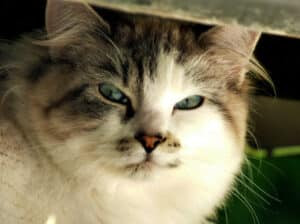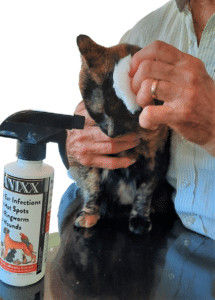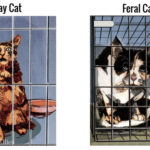 cat side eye
cat side eye
The enigmatic Side Eye Cat. It’s a look that many cat owners recognize, but often struggle to interpret. This subtle yet powerful feline gaze can speak volumes, conveying a range of emotions from amusement to suspicion, and even hinting at underlying health issues. Deciphering your cat’s eye expressions, especially the nuanced side eye, is key to deepening your bond and understanding their needs. This guide will delve into the fascinating world of cat eye communication, helping you to understand what your feline friend is trying to tell you with those captivating glances.
Unveiling the Anatomy of Cat Eyes
Before we can truly understand cat eye language, it’s helpful to appreciate the unique construction of their eyes. Cat eyes differ significantly from human eyes in several ways, each contributing to their exceptional vision and expressive capabilities. One of the most remarkable features is the tapetum lucidum. This is a reflective layer located behind the retina that acts like a biological mirror. It captures light that passes through the retina and reflects it back, giving the light-sensitive cells a second chance to absorb it. This ingenious adaptation is what grants cats their superior night vision, allowing them to see in light levels far dimmer than what humans require.
Another crucial difference lies in the retina itself. A cat’s retina is densely packed with rod cells, which are photoreceptor cells specialized for detecting light and motion. In contrast, cone cells, responsible for color vision, are less numerous. This rod-dominant retina explains why cats excel at seeing in low light and detecting movement, but have a more limited color perception compared to humans. Their world is seen in less vibrant hues and fewer colors, but with exceptional clarity in the dark.
The vertical pupils, a signature trait of feline eyes, also play a critical role. These pupils are not just aesthetically unique; their shape allows for an extraordinary range of dilation and constriction. In dim light, they can open wide into large, round circles to maximize light intake. In bright sunlight, they narrow to thin slits, protecting the sensitive retina from overexposure. This rapid adjustability to varying light conditions is essential for crepuscular hunters like cats, who are most active during dawn and dusk.
Furthermore, the positioning of a cat’s eyes on their face contributes to their wide field of vision – approximately 200 degrees, compared to the human field of view of around 180 degrees. This panoramic vision provides cats with heightened awareness of their surroundings, crucial for both hunting prey and detecting potential predators. Even subtle shifts in their gaze can carry significant meaning, directing attention to points of interest or perceived threats, which is essential for communication.
Alt text: A close-up photo of a tabby cat’s face showing a slight side eye expression, with text overlay asking “Is your cat relaxed or anxious?”. This alt text is descriptive and uses relevant keywords like “tabby cat”, “side eye”, “relaxed”, and “anxious”, enhancing SEO.
Decoding Cat Eye Behaviors and Their Meanings
Cat eyes are far more than just organs of sight; they are sophisticated communication tools, capable of expressing a wide spectrum of emotions and intentions. Learning to interpret these subtle visual cues can profoundly improve our understanding of our feline companions, offering valuable insights into their emotional and physical well-being.
The Enigma of the Side Eye Cat Explained
The “side eye,” that sideways glance, is one of the most frequently observed and often misinterpreted cat eye behaviors. Its meaning isn’t singular; it depends heavily on the context and accompanying body language.
When a relaxed cat gives you the side eye, often with pupils of normal size or slightly constricted, it’s typically a positive sign. In this context, it often indicates they feel comfortable and secure in your presence. It’s a look of acknowledgment without direct confrontation, a sign of trust. Their body posture will be relaxed, perhaps even lounging or purring.
Conversely, a side eye from an alert and curious cat will look different. Here, the pupils might be slightly dilated as they focus on something intriguing. Their ears will likely be perked forward, and their whiskers may be angled forward as well, all indicating focused attention. This type of side eye is common when a cat is observing potential prey, a new toy, or an unfamiliar sound in their environment. They are gathering information and assessing the situation.
However, the side eye can also signal less pleasant emotions. An anxious or fearful cat might use the side eye to keep an eye on a perceived threat without making direct eye contact, which could be seen as confrontational. In these instances, you’ll notice significantly dilated pupils, along with other stress signals like flattened ears pressed against their head, a tense body posture, or a crouched stance. They are trying to remain aware of danger while minimizing perceived vulnerability.
When a cat is feeling aggressive or defensive, the side eye takes on a more intense and menacing quality. The pupils might constrict into narrow slits, and their gaze will be fixed and unwavering, almost a hard stare from the corner of their eye. This intense side eye, particularly when paired with a stiff body, flattened ears, a twitching tail, or vocalizations like growling or hissing, is a clear warning signal. The cat feels threatened and is prepared to defend itself. It’s crucial to recognize this as a sign to give them space and de-escalate the situation.
It’s also important to consider that a cat exhibiting side eye behavior could be experiencing pain or discomfort. If you observe your cat giving frequent side eye glances, particularly accompanied by other unusual behaviors such as a loss of appetite, decreased activity levels, hiding, or changes in grooming habits, it’s essential to consult with a veterinarian to rule out any underlying medical issues.
Alt text: A portrait of a Siamese cat with bright blue eyes giving a direct stare, accompanied by the text “There’s meaning in a cat’s stare”. This alt text describes the cat breed, eye color, and action (stare), and includes the on-image text for context, contributing to semantic SEO.
Other Telling Cat Eye Behaviors
Beyond the side eye, cats employ a rich repertoire of eye behaviors to communicate. One of the most heartwarming is the slow blink, often affectionately termed a “cat kiss.” When a cat gazes at you with relaxed eyes and slowly closes and opens them, it’s a profound expression of trust, affection, and contentment. Returning a slow blink is a wonderful way to reciprocate this feline “kiss” and strengthen your bond.
Wide eyes with fully dilated pupils can indicate a range of intense emotions. While they can signal excitement, such as during playful pouncing or when anticipating a meal, they can also denote fear, anxiety, or aggression, especially if accompanied by tense or defensive body language. Context is crucial in interpreting dilated pupils.
Conversely, narrowed eyes or squinting in cats usually signals contentment, relaxation, and pleasure. You might observe your cat squinting blissfully when basking in a sunbeam, being gently petted, or enjoying a favorite treat. However, persistent squinting, especially if it’s more pronounced in one eye or accompanied by other signs of discomfort, could be an indicator of eye irritation, pain, or infection.
Environmental factors also play a role in influencing cat eye behavior. Changes in ambient lighting will naturally cause pupil dilation or constriction. Unfamiliar or stressful surroundings might trigger more alert and anxious eye expressions. Similarly, the presence of other animals, unfamiliar people, or changes in their routine can all affect how a cat uses their eyes to communicate their emotional state.
When deciphering cat eye language, it’s paramount to consider the entire picture of feline body language. A cat’s eyes are just one piece of their complex communication system. The position of their ears, the movement of their tail, their overall body posture, and even their vocalizations all contribute to the message they are conveying. For instance, a cat with dilated pupils and an upright, quivering tail is likely experiencing excitement or anticipation, whereas dilated pupils combined with a puffed-up tail and flattened ears suggest fear or defensiveness. Observing these combined cues provides a more accurate understanding of your cat’s emotional state.
Alt text: A concerned-looking woman closely examining her ginger cat’s eyes, with text overlay stating “Watch out for signs of eye troubles”. This alt text describes the action and emotion, cat breed (ginger cat), and includes the text overlay, enhancing contextual relevance and SEO.
Recognizing When Cat Eye Issues Warrant a Vet Visit
While cat eyes are expressive and beautiful, they can also be early indicators of underlying health problems. Being vigilant for changes in your cat’s eyes and vision is crucial for their well-being.
One of the most obvious signs of potential eye problems is any alteration in the appearance of the eyes themselves. Redness of the conjunctiva (the pink tissue around the eye), swelling of the eyelids, or any discharge (whether clear, yellow, or green) from the eyes are all red flags. If you notice your cat’s eyes appear cloudy, dull, or exhibit a change in color, this could also signal an issue. Excessive tearing or watery eyes, known medically as epiphora, is another symptom to monitor closely.
Behavioral changes can also be indicators of eye problems, sometimes even before physical signs are readily apparent. If your cat starts squinting more frequently than usual, pawing excessively at their eyes, rubbing their face against furniture, or seems to have difficulty seeing objects or navigating their familiar environment, these are all potential signs of eye discomfort or vision impairment. A cat that suddenly becomes clumsy, bumping into furniture or walls, or hesitant to jump to familiar heights might be experiencing vision loss.
A particularly concerning sign is anisocoria, or uneven pupil sizes – where one pupil is noticeably larger or smaller than the other. While slight, temporary variations in pupil size can be normal, persistent anisocoria can be a symptom of serious underlying conditions, including neurological issues, Horner’s syndrome, or glaucoma.
Given the complexity of feline eye health and the potential for serious conditions, it’s vital to know when to seek professional veterinary care. As a general guideline, any noticeable or persistent change in your cat’s eyes or vision should prompt a veterinary consultation. This includes persistent redness, swelling, discharge, cloudiness, changes in eye color, excessive tearing, squinting, or changes in pupil size or responsiveness to light. Certain eye conditions, such as glaucoma or retinal detachment, can progress rapidly and lead to irreversible vision loss if not treated promptly. Early intervention is often key to preserving your cat’s sight.
Alt text: A veterinarian in blue scrubs gently examining a tabby cat’s eyes during a check-up. This alt text is descriptive, mentioning the vet’s attire, cat breed, and the action of eye examination, reinforcing the topic of veterinary care for cat eyes and improving SEO.
Regular veterinary check-ups are also crucial for proactive eye health maintenance. During routine examinations, your veterinarian can detect subtle changes or early signs of eye conditions that you might not notice at home. They can also provide tailored advice on how to best care for your cat’s eyes and address any concerns you might have regarding their eye behaviors or expressions.
Understanding your cat’s eye language, including the nuances of the side eye cat, is a continuous journey that deepens the meaningful relationship you share with your feline companion. As you become more attuned to their subtle eye expressions, you’ll be better equipped to respond to their needs, whether it’s offering reassurance, initiating playtime, or simply respecting their need for space. Remember, each cat is an individual, and their eye language may have unique personal nuances. Take the time to observe and learn your own cat’s individual patterns and expressions. By doing so, you’re not just decoding their behavior; you’re strengthening the precious bond you share.
Banixx for Cat Lovers
For further insights and expert advice on keeping your cat happy, healthy, and thriving, make sure to visit Banixx regularly. We are dedicated to providing you with the most current information and practical tips to help your feline friend enjoy a long and contented life by your side. Whether you’re seeking guidance on topics like caring for a Polydactyl Cat, ensuring optimal feline hydration health, or discovering more tips for enriching your cat’s life, such as keeping their teeth clean, we warmly invite you to return to Banixx and explore our wealth of resources and expertise. Together, we can continue to nurture the well-being and happiness of your cherished feline companion.
 cat ringworm
cat ringworm
Sources
https://www.rover.com/blog/cat-eyes-meaning/
https://www.petmd.com/cat/behavior/cat-body-language
https://www.catster.com/lifestyle/cat-pupils/
https://www.fearfreehappyhomes.com/why-do-cats-have-vertical-pupils-the-hunts-the-thing/
https://www.thesprucepets.com/cat-talk-eyes-553942
https://www.merckvetmanual.com/cat-owners/eye-disorders-of-cats/eye-structure-and-function-in-cats

